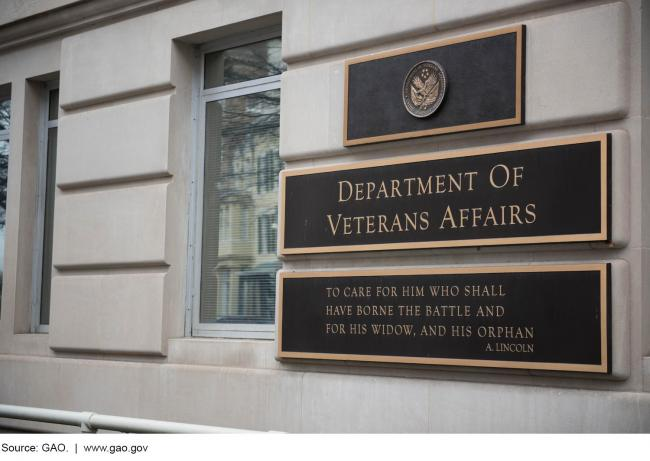VA Health Care: Improvements Needed in Data and Monitoring of Clinical Productivity and Efficiency
Fast Facts
To help manage and optimize its resources, the Department of Veterans Affairs collects data on the productivity and efficiency of its health care providers and medical centers.
However, we testified that the data VA collects do not account for all providers or clinical services, and may not accurately reflect clinical workload or staffing levels. We also found that VA lacks a robust process to oversee medical centers' efforts to identify drivers of low productivity and efficiency and implement solutions.

Photo of VA Headquarters Building
Highlights
What GAO Found
In 2013, the Department of Veterans Affairs (VA) implemented clinical productivity metrics to measure physician providers' time and effort to deliver procedures. VA also developed statistical models to track clinical efficiency at VA medical centers (VAMC). Data collected under the metrics and models are used to identify sub-optimal clinical productivity and inefficiency at VAMCs. GAO found that contrary to federal internal control standards for information, VA's metrics and models may not provide quality information because the information is incomplete and may not accurately reflect clinical productivity and efficiency. GAO identified limitations with VA's metrics and models that limit VA's ability to assess whether resources are being used effectively. Specifically,
- Productivity metrics are not complete because they do not account for all providers or clinical services. Due to data systems limitations, the metrics do not capture all types of providers who deliver care at VAMCs, including contract physicians and advanced practice providers, such as nurse practitioners, serving as sole-providers. In addition, the metrics do not capture providers' workload evaluating and managing hospitalized patients.
- Productivity metrics may not accurately reflect the intensity of clinical workload. A 2016 VA audit shows that VA providers do not always accurately code the intensity of—that is, the amount of effort needed to perform— clinical procedures or services. As a result, VA's productivity metrics may not accurately reflect provider productivity, as differences between providers may represent coding inaccuracies rather than true productivity differences.
- Productivity metrics may not accurately reflect providers' clinical staffing levels. Officials at five of the six selected VAMCs GAO visited reported that providers do not always accurately record the amount of time they spend performing clinical duties, as distinct from other duties.
- Efficiency models may also be adversely affected by inaccurate workload and staffing data. To the extent that the intensity and amount of providers' clinical workload are inaccurately recorded, some of VA's efficiency models examining VAMC utilization and expenditures may also be inaccurate. For example, the model that examines administrative efficiency requires accurate data on the amount of time VA providers spend on administrative tasks; if the time providers allocate to clinical, administrative, and other tasks is incorrect, the model may overstate or understate administrative efficiency.
GAO found that VA Central Office has taken steps to help VAMCs monitor provider productivity by developing a comprehensive analytical tool VAMCs can use to identify the drivers of low productivity. While VAMCs are required to monitor VA's productivity metrics, GAO found that VA does not require VAMCs to monitor VA's efficiency models. Further, VA does not systematically oversee VAMCs' efforts to monitor clinical productivity and efficiency. As a result, VA cannot systematically identify best practices to address low productivity and inefficiency as well as determine the factors VAMCs commonly identify as contributing to low productivity and inefficiency. This approach is inconsistent with federal standards for internal control related to monitoring.
Why GAO Did This Study
This testimony summarizes the information contained in GAO's May 2017 report, entitled VA Health Care: Improvements Needed in Data and Monitoring of Clinical Productivity and Efficiency (GAO-17-480).
For more information, contact Randall B. Williamson at (202) 512-7114 or williamsonr@gao.gov.
